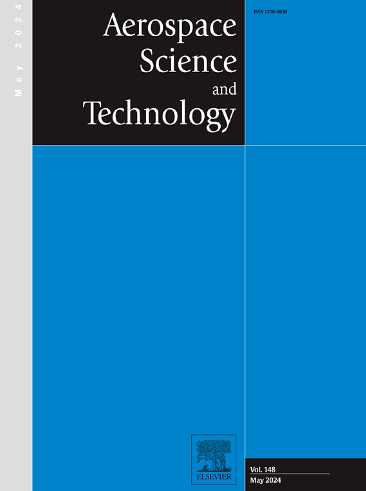Investigation of rapid detonation initiation under injection mixing conditions with downstream low-energy ignition strategies
IF 5
1区 工程技术
Q1 ENGINEERING, AEROSPACE
引用次数: 0
Abstract
This study investigates the deflagration-to-detonation transition (DDT) under injection mixing conditions using high-resolution numerical simulations and a downstream ignition strategy. We analyze the effects of inflow Mach number, fuel equivalence ratio (ER), ignition duration, and ignition location on mixing and detonation initiation. Results show that lower Mach numbers enhance transverse mixing, while higher Mach numbers facilitate faster detonation onset via stronger shear-induced energy deposition. Near-stoichiometric ER reduces initiation distance and boosts detonation velocity, whereas deviations impede flame propagation. Additionally, a new initiation mechanism emerges under low-energy ignition and low internal energy mixtures: a Mach stem forms during flame acceleration, leading to autoignition behind it. Reflected shocks further promote detonation by intensifying interactions with flame fronts. This mechanism demonstrates a pathway to rapid detonation using minimal ignition energy. Furthermore, appropriate ignition duration and location accelerate upstream flame propagation, with suboptimal placement risking poor mixing and detonation failure. These findings provide comprehensive insights into optimizing conditions for efficient detonation initiation under realistic supersonic combustion systems.
喷射混合条件下下游低能点火策略下的快速起爆研究
本研究采用高分辨率数值模拟和下游点火策略研究了喷射混合条件下的爆燃-爆轰过渡(DDT)。分析了来流马赫数、燃料当量比、点火时间和点火位置对混合和爆轰起爆的影响。结果表明,较低的马赫数增强了横向混合,而较高的马赫数通过更强的剪切诱导能量沉积促进了更快的爆轰起爆。近化学计量ER减小起爆距离,提高爆速,而偏差阻碍火焰传播。此外,在低能点火和低内能混合物下出现了一种新的起爆机制:在火焰加速过程中形成马赫数杆,导致其后面的自燃。反射冲击通过加强与火焰锋面的相互作用进一步促进爆轰。这种机制证明了一个途径,以快速引爆使用最小的点火能量。此外,适当的点火时间和位置加速了上游火焰的传播,而不理想的放置可能导致混合不良和爆炸失效。这些发现为在实际超音速燃烧系统下优化有效爆轰起爆条件提供了全面的见解。
本文章由计算机程序翻译,如有差异,请以英文原文为准。
求助全文
约1分钟内获得全文
求助全文
来源期刊

Aerospace Science and Technology
工程技术-工程:宇航
CiteScore
10.30
自引率
28.60%
发文量
654
审稿时长
54 days
期刊介绍:
Aerospace Science and Technology publishes articles of outstanding scientific quality. Each article is reviewed by two referees. The journal welcomes papers from a wide range of countries. This journal publishes original papers, review articles and short communications related to all fields of aerospace research, fundamental and applied, potential applications of which are clearly related to:
• The design and the manufacture of aircraft, helicopters, missiles, launchers and satellites
• The control of their environment
• The study of various systems they are involved in, as supports or as targets.
Authors are invited to submit papers on new advances in the following topics to aerospace applications:
• Fluid dynamics
• Energetics and propulsion
• Materials and structures
• Flight mechanics
• Navigation, guidance and control
• Acoustics
• Optics
• Electromagnetism and radar
• Signal and image processing
• Information processing
• Data fusion
• Decision aid
• Human behaviour
• Robotics and intelligent systems
• Complex system engineering.
Etc.
 求助内容:
求助内容: 应助结果提醒方式:
应助结果提醒方式:


